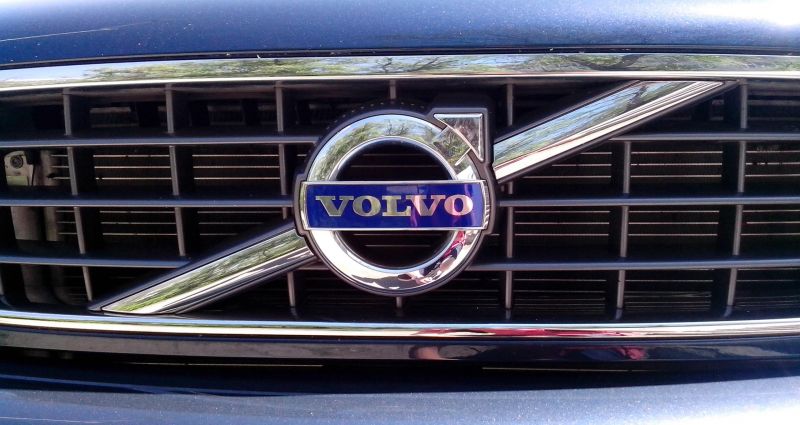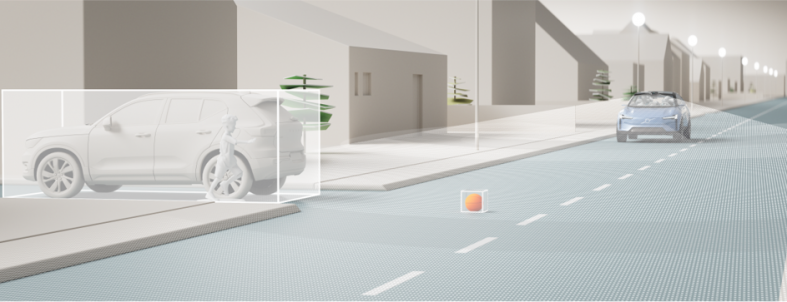Volvo Plans to Launch its New ‘Ride Pilot' Autonomous Driving Feature in California, Which Requires No Human Supervision
【Summary】Volvo Cars announced on Wednesday that its new autonomous driving feature called “Ride Pilot” can operate safely without human oversight. The automaker plans to offer the feature on vehicles in California first, before rolling its out to other regions. The name "Ride Pilot" implies that when the car is driving on its own, Volvo Cars takes full responsibility for all of the driving tasks.

Although many automakers are introducing SAE Level 2 autonomous highway driving features in their vehicles, all of these L2 systems require that the driver pay attention at all times and be ready to take over if needed.
But as autonomous driving technology advances, some automakers including Mercedes-Benz and Volvo Cars, are developing more advanced Level 3 automated driving features that can operate without human supervision at times, allowing the driver to read a book or watch a movie while the vehicle takes over the driving tasks.
Volvo Cars announced on Wednesday that its new autonomous driving feature called "Ride Pilot" can operate safely without human oversight and the automaker plans to offer the feature on its vehicles in California, before rolling its out to other regions.
Ride Pilot is intended to make driving a Volvo model even more convenient and enjoyable, the automakers says. The name Ride Pilot implies that when the car is driving on its own, Volvo Cars take responsibility for all of the driving tasks, offering the driver comfort and peace of mind.
Ride Pilot is planned to be available as an add-on subscription on the company's forthcoming fully electric SUV, once its verified to be safe for highway driving. The new flagship SUV that Ride Pilot will be offered in will be revealed later this year.
The full-stack autonomous driving platform powering the Ride Pilot system was developed by autonomous driving (AD) software company Zenseact together with Volvo Cars' in-house team of developers, and temas from lidar company Luminar, which is one of Volvo Cars' technology partners.
Volvo Cars announced in May 2020 that Luminar will supply its advanced lidar perception technology for the automaker's next-generation self-driving vehicles.
Zenseact is the new self-driving software unit of Volvo that was formed in Oct 2020 after the automaker dissolved a previous software joint venture with Veoneer. The software subsidiary is entirely owned by Volvo Cars and is tasked with developing autonomous driving technology for both Volvo and the larger automotive industry.
Volvo's Ride Pilot uses more than two dozen sensors on the vehicle, including five radars, eight cameras and 16 ultrasonic sensors. Luminar's Iris LiDAR sensor is tuned to work seamlessly with the software developed by Zenseact.
This standard sensor set-up provides excellent vision and perception reliability, according to Volvo. It offers full redundancy to protect against any single point failure in the system. It will enable the upcoming SUV to achieve safe autonomous driving, Volvo says.
"We are proud to announce the planned U.S. launch of our first truly unsupervised autonomous driving feature, as we look to set a new industry standard for autonomy without compromising safety," said Mats Moberg, head of research and development at Volvo Cars. "Having Zenseact's brand new AD software and Luminar's LiDAR standard in our new fully electric SUV is a game-changer for Volvo Cars, as well as for automotive safety and autonomous driving."

Volvo's Ride Pilot includes an advanced perception system that uses using lidar, radar and cameras for safe naviagation without human oversight.
Ride Pilot is a software-based system, therefore its can be upgraded over time to add new features and functionality via over-the-air updates.
Volvo says Ride Pilot will be standard on future Volvo vehicles, however it will only be made available after its goes through a rigorous verification and testing protocol. This includes validation of the technology as safe for use on highways in a number of varying conditions, according to Volvo. The validation process is already underway in Europe.
Volvo Cars is already testing autonomous driving functionalities on roads in Sweden together with its partner Zenseact, and is also collecting data across Europe and the U.S.
By the middle of this year, Volvo intends to begin testing on roads in California once Ride Pilot is proved to be safe and all of the necessary approvals have been secured. Volvo says the climate, traffic conditions and regulatory framework in California provides a favorable environment for the introduction of autonomous driving technology on public roads.
After launching in California, Volvo's Ride Pilot will begin to gradually roll out in other markets and regions around the globe.
Mercedes Benz announced a similar Level 3 autonomous driving system last month called "Drive Pilot." The automaker received approval from regulators in Germany to offer the feature. Germany's approval means Mercedes-Benz can offer its new S-Class sedan with Drive Pilot to customers in the first half of 2022.
The highly automated system developed by Mercedes-Benz allows the driver to focus on other activities, like reading a book or watching a movie, while the system is active in heavy traffic or on congested highways.
Its expected that more of these Level 3 autonomous driving systems will be offered by other automakers in the future as the technology advances from the current systems, including Tesla's Autopilot, which require a driver to pay attention to the road at all times.
For drivers in California that deal with the state's notorious traffic congestion, Volvo's Ride Pilot can offer a reprieve and make commuting much less stressful.
-


Ford is Testing a New Robotic Charging Station to Assist Drivers of EVs With Disabilities
-


Ford Raises the Prices of the F-150 Lightning Electric Pickup Due to Rising Raw Material Costs
-


The BMW 7-Series to Feature HD Live Maps From HERE Technologies for Hands-Free Highway Driving in North America at Speeds up to 80 MPH
-


AutoX to Use the 'Eyeonic Vision Sensor' from California-based SiLC Technologies for its Robotaxi Fleet in China
-


LG Develops ‘Invisible’ Speaker Sound Technology That Could Revolutionize In-Vehicle Audio
-


Researchers at South Korea’s Chung-Ang University Develop a ‘Meta-Reinforcement’ Machine Learning Algorithm for Traffic Lights to Improve Vehicle Throughput
-


Zeekr’s New 009 Electric Passenger Van is the World’s First EV to Feature CATL’s Advanced ‘Qilin’ Battery With a Range of 510 Miles
-


Redwood Materials is Building an Electric Vehicle Battery Recycling Facility in South Carolina
- Volkswagen Announces Pricing and Styling Updates for the 2023 ID.4 Electric SUV, Which is Being Assembled in Tennessee
- China’s Geely Launches the First of 9 Low Earth Orbit Satellites That Will Help Guide its Autonomous Cars
- New Premium Electric Vehicle Brand Zeekr Is Exploring IPO Options in the U.S. or Hong Kong, According to Sources
- Ford is Testing a New Robotic Charging Station to Assist Drivers of EVs With Disabilities
- Rivian is Laying Off 6% of its Workforce, Citing Erratic Economy
- Volkswagen Breaks Ground on the First of Six European Battery Cell Factories as Part of a $20 Billion Investment
- FCA to Pay $300 Million Fine for Emissions-Cheating Vehicles
- Uber and its Technology Partner Aurora to Expand Autonomous Trucking Pilot in Texas
- Hyundai to Launch Autonomous Ride-Hailing Service in South Korea
- GM's New 'Plug And Charge' Feature Will Simplify the Charging Process For its Current & Future EVs











 About Us
About Us Contact Us
Contact Us Careers
Careers